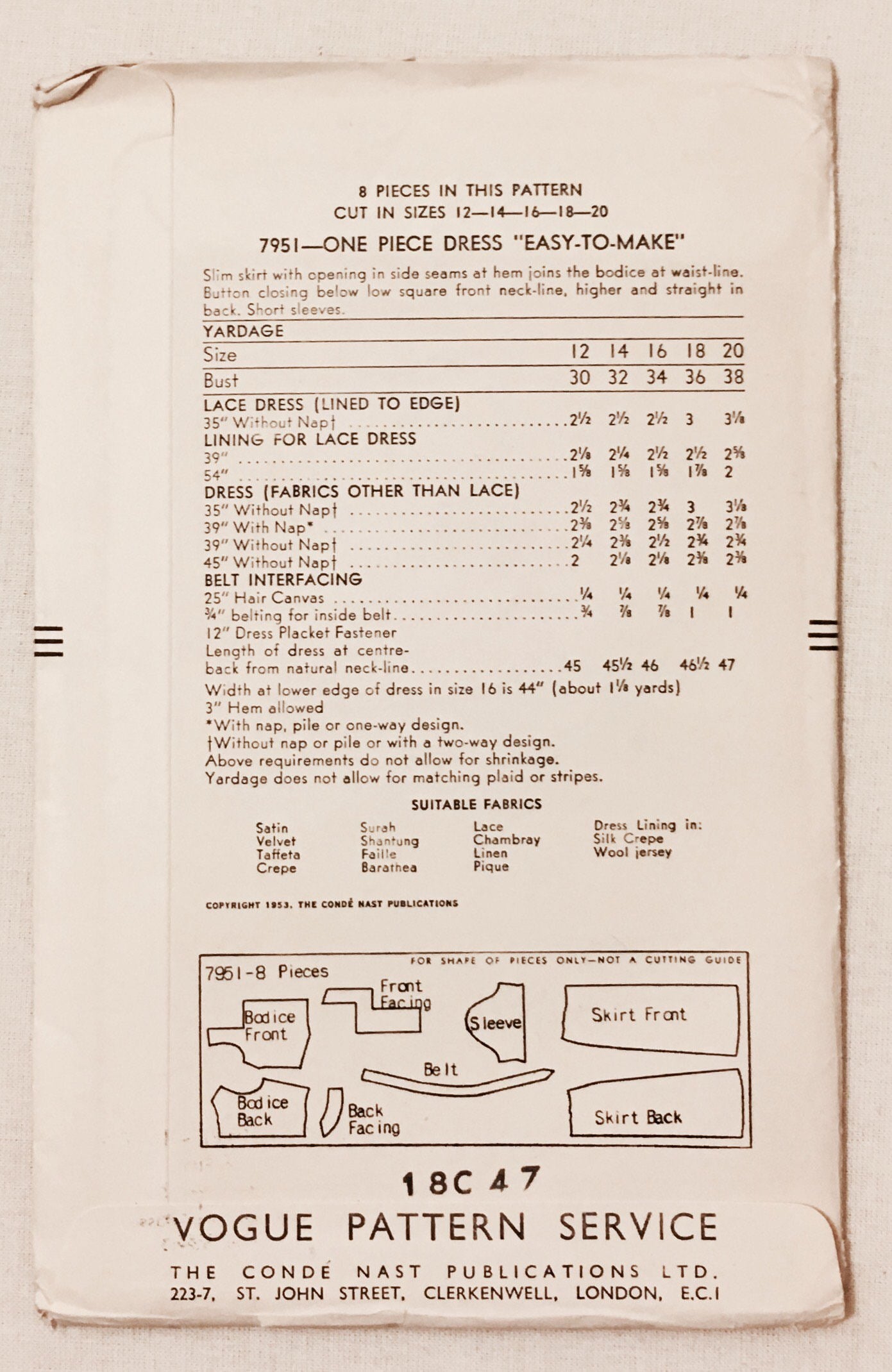http://www.pastpatterns.com/2307.html
Does this look at all familiar?
 |
| No. Slight resemblance on the style lines, but... no. |
I've had the Butterick for years. And pulled it out thinking it was older and wouldn't it be nice to wear a repro of a Great War dress for a lecture on said subject , regarding the 100th anniversary?
Well, no. It's 20s.
The 1916/1919 dates on the pattern are for the trademarks and patents for the company.
https://www.vintagestitching.com/pages/dating-vintage-patterns
if you want to read a little on the madness of this subject.
Past patterns says this is from 1923.24, and while I think it's older than that, I have no proof and defer to Ms Altman's knowledge base and collection.
Mostly, I want to know what sorts of fabrics this would have been made from , and get some comparative images to work from. The drawings are lovely, but I want mooooore.
I traced some of it, I cut a lot of it.
 |
| Quite rightly, I let this sit for a week. And then I cut out a toile from fabric I don't give a damn about |
The center piece is the lapel and the curved flange (that would cover the welted pocket opening in the dress body. A dress with pockets is a win!).
SEAMS!!!
As with the patterns of the time, the instructions are pretty light on the ground. Handlettered to boot. This is one company where there's definitely a house style and one draftsperson's hand present.
Considering how 'vaguely precise' some of the instructions are, I feel that I am giving nothing away by reproducing them here. While we learn a lot about the sleeves and making tailor's tacks, there's still so much missing in how to address that long long open seam allowance around the neck and center. Not to mention any lining for that vest front that would finish the outside seam that runs around the cut-on collar (it's got to flex as the undercollar, and be visible at the flange). Still some mysteries.
I love that you "arrange dress on lining". It's just a bodice lining, which has a smaller profile than the dress. By attaching the sack vest outside to the fitted bodice, you could bring in and anchor the larger pieces by their seam allowances without apparent seaming. Which would be covered up by that narrow added belt (that belt is hot stuff in 1918, believe me)
And aren't the handdrawn numbers lovely?
From the excellent ""Witness2fashion.wordpress" webpage: fashions for July 1918.
Second Battle of the Marne that summer. People say the war is practically won with the arrival of the Americans, but it's not over yet.
 |
| https://witness2fashion.wordpress.com/2016/08/10/summer-dresses-from-butterick-july-1918-part-1/ |
This vest front Butterick 9992 strikes me as similar enough to give me a good idea as to materials.
And how do I close that front up?
 |
| http://www.extantgowns.com/2011/12/edwardian-jumper-dress.html |
I know it's not the same style, but it's roughly the same era, so techniques would be similar.
See that dark grey line up the back facing? It's all small hooks to close it up
 |
| I added two inches to the armscye and the sleeve. I have two extra inches of sleeve in that armscye. I could not take photos of me in it as it's just too tight in the shoulders to move. It is super fitted, after adding inches and inches and inches. And I already have a moulage that fits like a glove (The term literally means “molding” or “casting”) |
But I am going to cut this short: I had a major fitting fail and a lack of love has set in.
The armscye was too small, now it's just not in the right spot because the back was too narrow and the neckline too high. A 1918 38" chest is not a 2018 38" chest.
Which makes me grateful I made this out of stuff I do not give a damn about; I won't try to cobble it into something wearable.
Basically, I am better off if I transfer style ideas and details to an existing similar sloper that fits me. A tube that already fits me. I can chase this armscye location around for a week, or I can draft this vest front onto an existing pattern. Or I can take a break from this and work on something successful to break this downer I'm on.
 |
| The vest front that makes the dress. |
 |
| I trimmed the super wide part a bit, and shortened it by an inch between the collar and the lower flange |
So I am going to mark the pieces as to what needs to happen, add the toile as it is to the package, and set it aside in the UFO pile for later.
 |
I learned the word 'enbiggening' from G Willow Wilson's Ms Marvel.
You learn stuff from comics. |
Because I need a win here. The lecture isn't until October.
And Hammer Pants are calling from 1991.
Which would be cooler if they were 1988, but....






















































